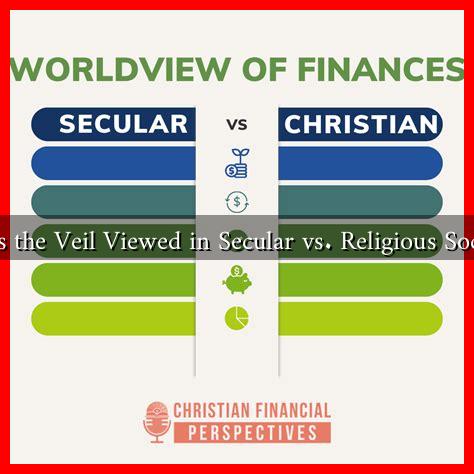-
Table of Contents
How Is the Veil Viewed in Secular vs. Religious Societies?
The veil, a piece of fabric worn by women in various cultures, has become a symbol of both religious devotion and cultural identity. Its significance varies widely between secular and religious societies, leading to diverse interpretations and reactions. This article explores how the veil is perceived in these contrasting contexts, highlighting the complexities surrounding its use and the implications for women’s rights and identity.
The Veil in Religious Societies
In many religious societies, the veil is often seen as a manifestation of faith and obedience to divine commandments. For instance, in Islam, the hijab is worn by many Muslim women as an expression of modesty and piety. The Quran encourages modest dress, and the hijab is interpreted as a way to fulfill this directive.
- Symbol of Faith: For many Muslim women, wearing the hijab is a personal choice that signifies their commitment to their faith.
- Community Identity: The veil can foster a sense of belonging within religious communities, reinforcing shared values and beliefs.
- Spiritual Empowerment: Some women view the veil as a source of empowerment, allowing them to define their identity on their own terms.
However, the perception of the veil is not universally positive within religious societies. In some cases, women may feel pressured to wear it due to societal expectations or familial obligations. This duality raises questions about autonomy and choice in religious practices.
The Veil in Secular Societies
In contrast, secular societies often approach the veil with skepticism or outright opposition. The secular viewpoint tends to emphasize individual freedom and gender equality, leading to debates about the implications of wearing a veil in public spaces.
- Symbol of Oppression: Many secular critics argue that the veil represents the oppression of women, viewing it as a tool of patriarchal control.
- Secularism and Integration: In countries like France, laws have been enacted to ban the wearing of religious symbols, including the hijab, in public institutions, citing the need for secularism and integration.
- Public Safety Concerns: Some argue that veils can hinder communication and pose security risks, particularly in contexts like airports or public events.
These perspectives can lead to significant social tensions, as seen in various European countries where debates over the veil have sparked protests and counter-protests. For example, in France, the 2004 law prohibiting the wearing of conspicuous religious symbols in schools has been a focal point of contention, highlighting the clash between secular values and religious expression.
Case Studies: Global Perspectives
To further illustrate the differing views on the veil, we can examine case studies from various countries:
- Iran: Following the 1979 Islamic Revolution, the hijab became mandatory for women, symbolizing the state’s interpretation of Islamic values. This has led to widespread protests by women advocating for their right to choose.
- Turkey: Historically, Turkey has oscillated between secularism and religious conservatism. The ban on headscarves in public institutions was lifted in 2013, reflecting a shift towards greater religious freedom.
- United States: In the U.S., the veil is often viewed through the lens of individual rights. While some women choose to wear the hijab as a personal expression of faith, others face discrimination and misunderstanding.
Statistics and Public Opinion
Public opinion on the veil varies significantly across different regions. A 2017 Pew Research Center survey found that:
- In predominantly Muslim countries, a majority of women who wear the hijab do so by choice.
- In Western countries, a significant portion of the population views the hijab as a symbol of oppression, with 60% of respondents in France supporting the ban on religious symbols in public schools.
Conclusion
The veil serves as a complex symbol that elicits a wide range of interpretations in both secular and religious societies. While it can represent faith, identity, and empowerment for some, it is also viewed as a symbol of oppression and a challenge to secular values by others. Understanding these differing perspectives is crucial for fostering dialogue and promoting respect for individual choices regarding religious expression. As societies continue to grapple with issues of gender, identity, and freedom, the veil will undoubtedly remain a focal point of discussion and debate.
For further reading on this topic, you can explore resources from the Pew Research Center and other academic studies that delve into the cultural significance of the veil across different societies.

